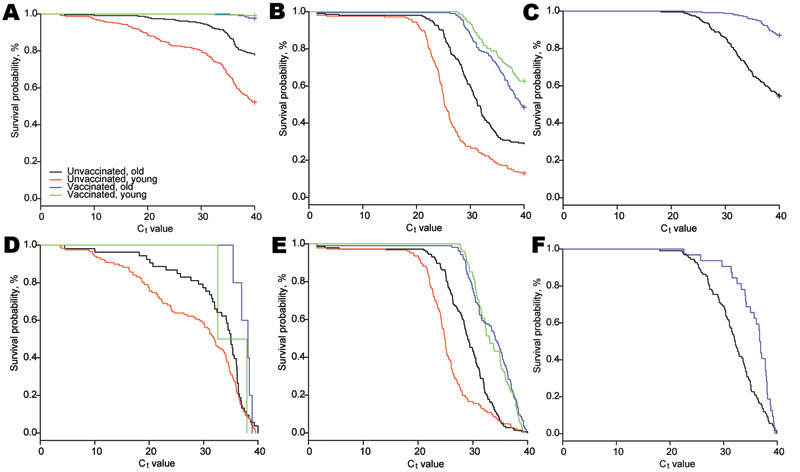Volume 17, Number 3—March 2011
Research
Reduction of Coxiella burnetii Prevalence by Vaccination of Goats and Sheep, the Netherlands
Figure 2

Figure 2. Kaplan-Meier curves for cycle threshold (Ct) values of all samples (A–C) and for samples with positive and doubtful results for Coxiella burnetii (Ct <40) (D–F), the Netherlands, January 1–June 10, 2009. A, D) Uterine fluid; B, E) vaginal mucus; C, F) milk. Old, pregnant and lactating; young, nulliparous.
Page created: July 25, 2011
Page updated: July 25, 2011
Page reviewed: July 25, 2011
The conclusions, findings, and opinions expressed by authors contributing to this journal do not necessarily reflect the official position of the U.S. Department of Health and Human Services, the Public Health Service, the Centers for Disease Control and Prevention, or the authors' affiliated institutions. Use of trade names is for identification only and does not imply endorsement by any of the groups named above.